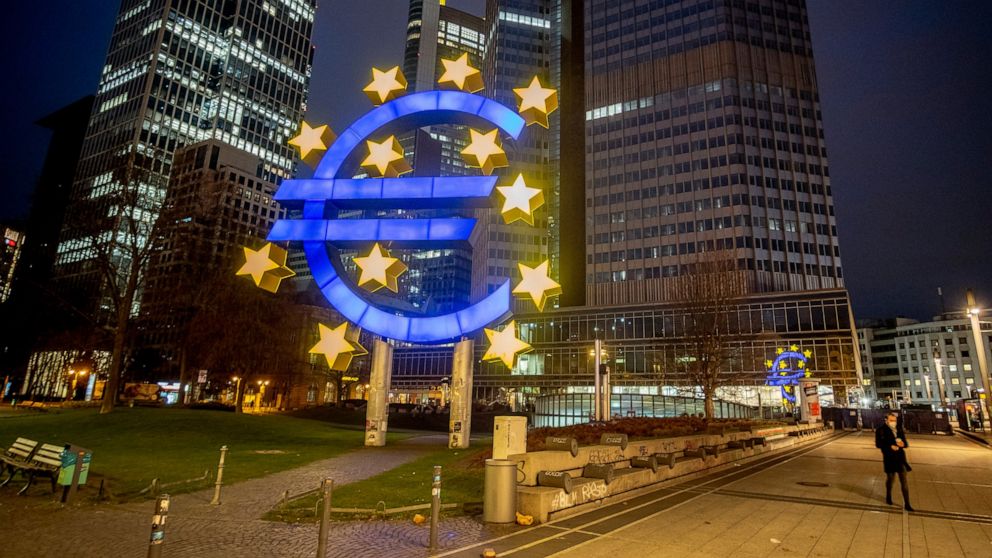Growth slows at end of 2021 in 19 countries that use euro
Growth in the 19 countries that use the euro slowed down at the end of last year
FRANKFURT, Germany — The European economy slowed noticeably at the end of last year as surging COVID-19 cases driven by the omicron variant piled on top of supply shortages and rising energy prices that dented consumer purchasing power. The result: An economic winter of discontent that may not lift until later this year.
Much of the slowdown came in Germany, Europe’s largest economy, where difficulty getting needed parts held back its export-heavy manufacturing economy. France, Spain and Italy showed stronger growth.
In the 19 countries that use the euro, growth in the last three months of 2021 came in at 0.3%, the European Union’s statistics agency said Monday. That compared with growth of 2.2% in the July-September quarter.
For the year, it was 5.2%, underlining how Europe’s economic recovery from the pandemic has moved at a somewhat slower pace than the rebound in the United States, where 2021 growth was 5.7%. U.S. growth was boosted by what economists say was a comparatively larger share of federal stimulus spending than what took place in Europe.
A major reason for Europe’s slowdown was spiking COVID-19 cases that led to new and shifting restrictions and deterred cautious consumers from spending money on restaurants, hotels and entertainment. That comes on top of clogged supply chains, which are leaving the eurozone’s export-oriented manufacturing sector unable to fill orders, and higher prices for oil, natural gas and electricity, which are weighing on businesses and consumers.
And the friction in Europe’s gears isn’t over yet. Growth “might weaken further” in the current quarter, according to economists at UniCredit bank.
Germany, usually a growth motor for the eurozone, shrank 0.7% in the fourth quarter and would slide into a shallow recession if growth is negative again in the first three months of this year. Two straight quarters of declining output is one definition of a recession.
No. 2 eurozone economy France, on the other hand, saw growth of 0.7% over the previous quarter, leaving the year’s figure at 7%. That is the strongest since 1969. The full-year figure was buoyed by strong consumer spending and services in the third quarter as many activities resumed during a lull in the pandemic.
Europe also faces uncertainty amid tensions over Russia massing troops on the Ukrainian border, raising fears of an invasion as Russia demands security concessions from NATO and the U.S.
Fears of conflict have helped keep natural gas prices unusually high in Europe because Russia is a major supplier and Europe’s underground gas reserves are low. So far, Russia says it has fulfilled all its long-term supply contracts, and analysts speculate that any sanctions imposed by the U.S. or the European Union may seek to avoid directly targeting Russian energy.
Analysts foresee a pickup in the second quarter of this year as supply chain difficulties ease as hoped.
The eurozone inflation rate was a record 5% in December and unemployment was running at 7.2% in November, the latest figures available.
The inflation figure presents a communications challenge for European Central Bank President Christine Lagarde when bank policymakers meet Thursday. Lagarde is expected to stick to her view that inflation is temporary and that the bank is far from raising interest rates, the usual antidote to higher inflation.
![]()


